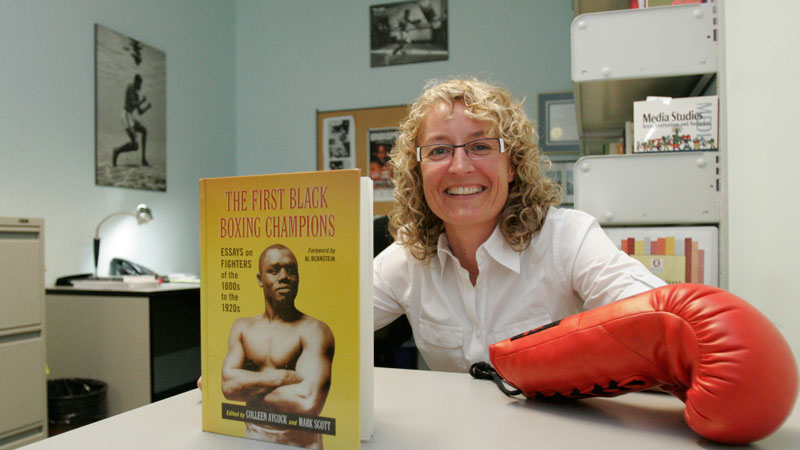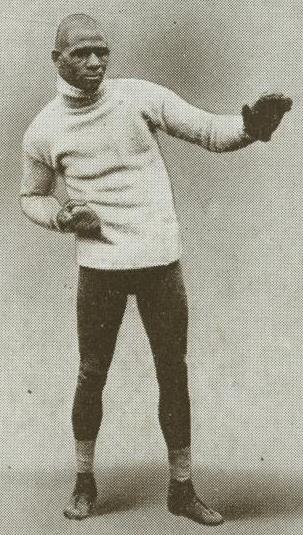 Cathy Van Ingen wrote the first biography of the boxer Dixie Kidd for The First Black Boxing Champions: Essays on Fighters of the 1800s to the 1920s.
Cathy Van Ingen wrote the first biography of the boxer Dixie Kidd for The First Black Boxing Champions: Essays on Fighters of the 1800s to the 1920s.
Cathy van Ingen wrote the first biography of the boxer Dixie Kid for The First Black Boxing Champions: Essays on Fighters of the 1800s to the 1920s.
He was a welterweight so tough and scrappy that he often boxed above his weight class.
Some of his in-the-ring shenanigans were later adopted Muhammad Ali and others.
But these days, little information remains about Dixie Kid, a Missouri-born athlete who battled addiction and died after jumping out a window.
Cathy van Ingen, associate professor of Kinesiology, has delved into the mystery of Aaron Lister Brown, who went from being an international celebrity to living on hand outs. The result is her chapter in the recently released book The First Black Boxing Champions: Essays on Fighters of the 1800s to the 1920s. It is the first documented biography of Dixie Kid.

Dixie Kid
Using historical records such as newspaper articles and census forms, van Ingen has pieced together the story of the athlete born in 1883 who became a boxing pro at age 16. His stage name came from “Dixie,” a song often performed in blackface about a slave who misses the plantation.
“The colour line was very thick at the time,” Van Ingen said. “He fought mostly other black fighters in ‘athletic exhibitions,’ since boxing was illegal then.”
Brown’s playfulness pleased the crowds. He weaved, bobbed and sidestepped punches. He feigned fatigue to give his opponents false confidence, pummeling them when they came closer.
“He would launch himself off the ropes and catapult toward his opponent,” van Ingen said. “He had this crazy fighting style that appealed to people.”
Brown went to France in the 1920s, where he became a celebrity. One newspaper said he was as popular amongst French boxing fans as Charlie Chaplin was with movie patrons.
Brown, who already had run-ins with the law, immersed himself in cocaine, alcohol and womanizing. He briefly returned to the U.S., then on his way back to Europe, fell asleep on a steamship and ended up in a Scottish port. There, he found a gym and became a boxing trainer. While in Scotland, he attacked a pharmacist for more cocaine and wracked up more criminal charges.
Back in the U.S., he worked as a janitor and lived in flop houses. He primarily lived off the kindness of others, van Ingen said.
At age 51, he jumped out a second floor window in Los Angeles, likely to commit suicide. He died from related injuries seven months later.
Dixie Kid was in more than 155 fights. He mentored Eugene Bullard, who went on to become the first African American fighter pilot.
Yet he’s been largely ignored by mainstream history, van Ingen said. Even his biography in the International Boxing Hall of Fame has the wrong information.
Dixie Kid, she said, “was a blues man in life and a jazz man in the ring.
“He lived a hard life, but in the ring, he was creative. He improvised. Everything we see in the ring nowcomes from some place in history, and Dixie Kid is one of them.”
Van Ingen researches the history and contemporary world of boxing. She founded the Shape Your Life boxing project, a program for female and trans survivors of violence. She also boxes, often using the name The Professor.
Related stories:
• Boxing book released about first black champions — Boxing News 24









